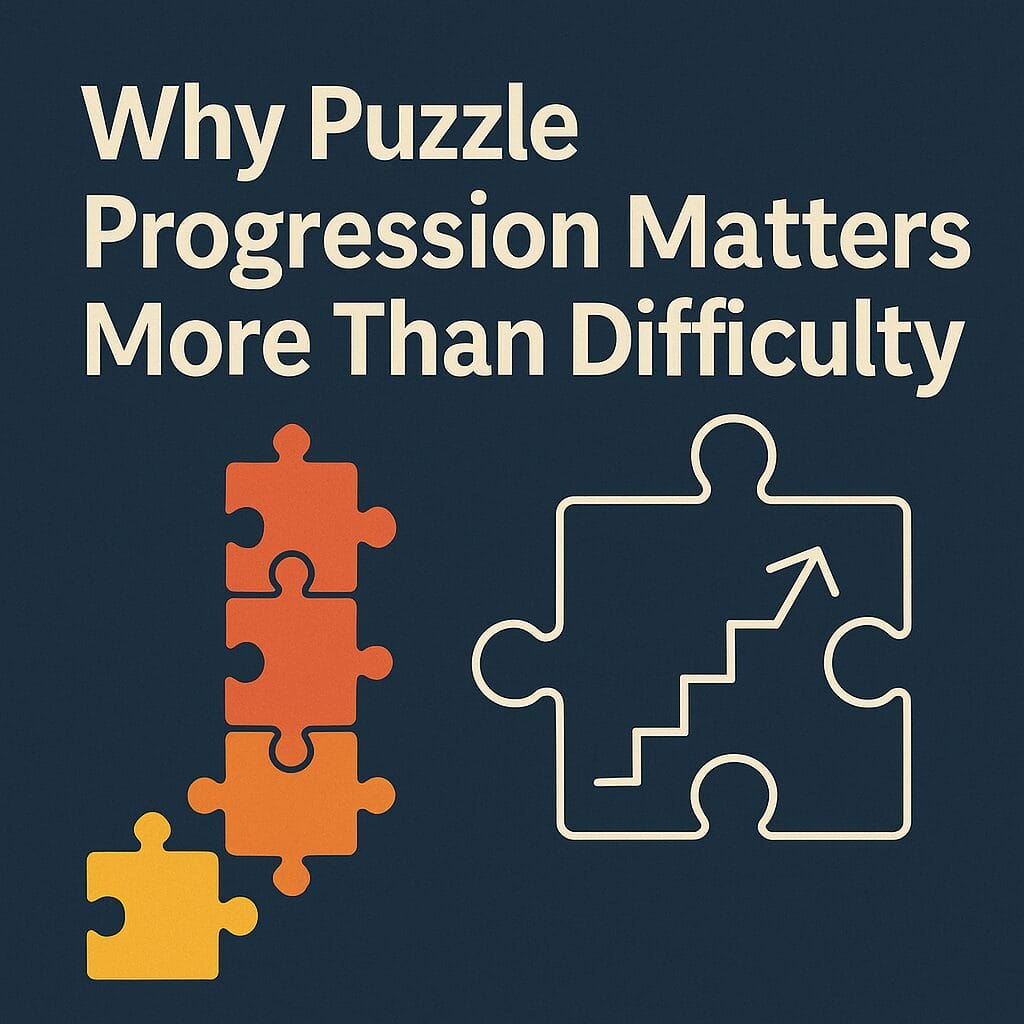The Puzzle Ladder: Why Challenge Isn’t Enough
“Make it Harder” Isn’t the Answer
When a puzzle feels too easy, what’s your first instinct?
Most creators just dial up the difficulty.
But that doesn’t always work.
A harder puzzle isn’t always a better puzzle.
And it’s rarely more satisfying.
What solvers really want is progression.
They want to feel like they’re climbing toward something — not just taking harder tests.
Why Solvers Love Progress, Not Just Pain
Great puzzle experiences feel like journeys.
You’re not just getting stuck — you’re leveling up.
Apps do this naturally:
- Each stage builds from the last
- You feel smarter as you go
- Earlier puzzles prepare you for the climax
Print puzzle books can do the same. You just need to think in terms of structure, not spikes.
Enter: The Puzzle Ladder
This is your new model:
📈 Progression: Each puzzle builds on skills or results from the one before.
🧩 Dependency: Later puzzles require earlier solves.
🏆 Payoff: The final puzzle is a Boss — and it feels like it.
This isn’t just about getting harder.
It’s about creating flow, rhythm, and reward.
How to Build a Puzzle Ladder
Here’s a structure you can use today:
Step 1: Set Up the Chain
- Puzzle 1: Easy logic or math maze
- Puzzle 2: Starts where Puzzle 1 left off
- Puzzle 3: Uses both answers to unlock the grid
Step 2: Vary the Format
- Use different types: Sudoku Pick and Place, logic grids, word math
- Keep the symbol type consistent (numbers, letters, etc.)
Step 3: Make the Boss Worth It
- Final puzzle should need earlier answers
- Build a visual gate (“Insert your codes from Puzzles 1–3”)
Classroom and Series Use
This model works perfectly for:
📚 Workbooks: Each chapter ends with a Boss Puzzle
🧠 Classrooms: Monday–Thursday chain → Friday capstone
📬 Newsletters: 3 puzzles Mon–Wed → Boss on Thursday
You get stronger attention, better memory retention, and more engagement.
Example: Math Maze + Sudoku Chain
- Puzzle 1: Math Maze (result: 12)
- Puzzle 2: Sudoku Pick and Place (start with 12 as anchor value)
- Puzzle 3: Logic deduction using patterns from 1 & 2
- Boss Puzzle: Uses both results to reveal a coded word
Readers don’t just solve. They feel like they’ve built something.
Your Turn
Start small:
- Link 3 existing puzzles
- Create a 4th that needs the earlier 3 answers
- Add visual cues: locks, keys, step counters
It’s not about punishing solvers.
It’s about rewarding their effort.
That’s what makes a puzzle memorable.
Further Reading
- The Secret to Getting Solvers to Come Back Tomorrow
- How to Design Puzzle Books That Actually Stick the Landing
- Designing Puzzle Books That Feel Like Quests, Not Worksheets
- What Puzzle Books Can Learn from the Most Addictive Game Apps

